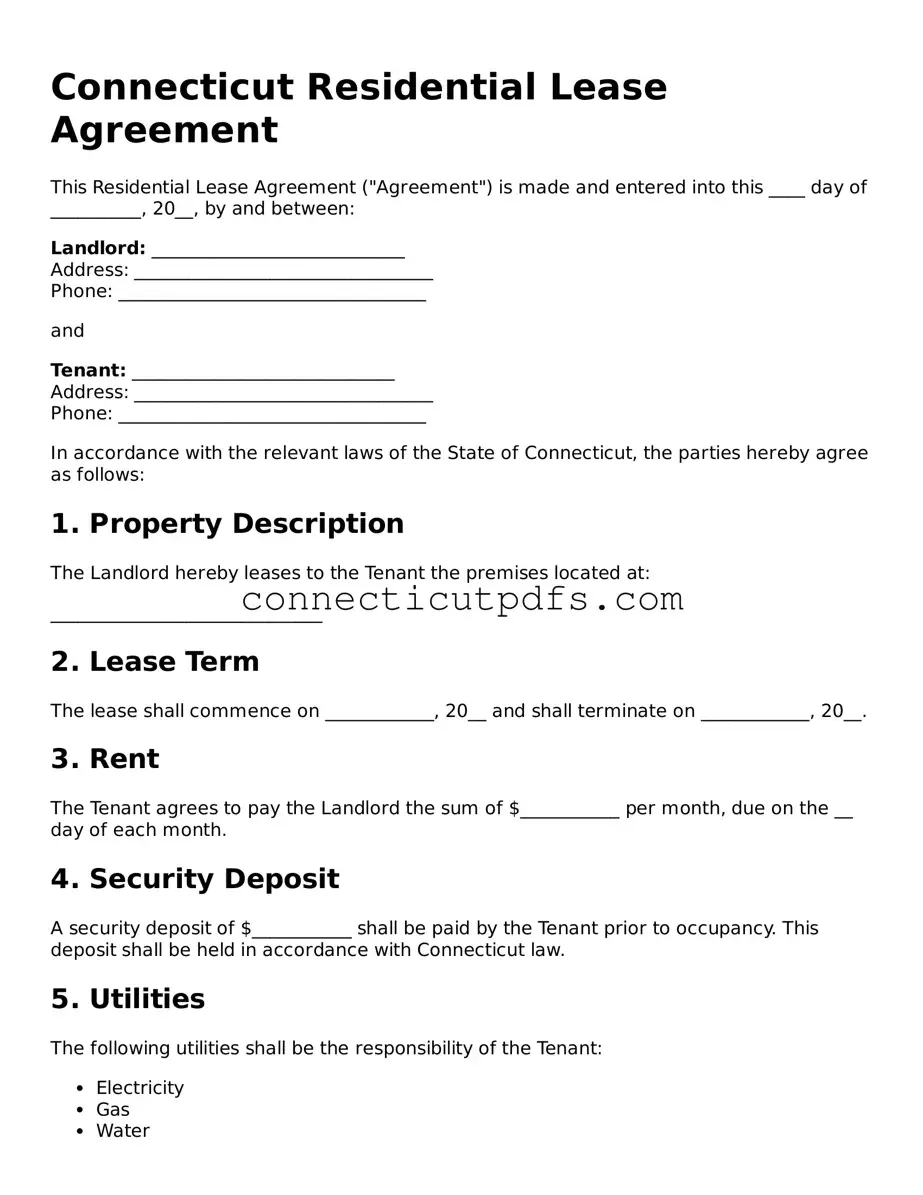Connecticut Residential Lease Agreement
This Residential Lease Agreement ("Agreement") is made and entered into this ____ day of __________, 20__, by and between:
Landlord: ____________________________
Address: _________________________________
Phone: __________________________________
and
Tenant: _____________________________
Address: _________________________________
Phone: __________________________________
In accordance with the relevant laws of the State of Connecticut, the parties hereby agree as follows:
1. Property Description
The Landlord hereby leases to the Tenant the premises located at:
______________________________
2. Lease Term
The lease shall commence on ____________, 20__ and shall terminate on ____________, 20__.
3. Rent
The Tenant agrees to pay the Landlord the sum of $___________ per month, due on the __ day of each month.
4. Security Deposit
A security deposit of $___________ shall be paid by the Tenant prior to occupancy. This deposit shall be held in accordance with Connecticut law.
5. Utilities
The following utilities shall be the responsibility of the Tenant:
- Electricity
- Gas
- Water
- Internet
The Landlord shall be responsible for:
6. Maintenance and Repairs
The Tenant shall keep the premises in good condition and shall promptly notify the Landlord of any necessary repairs.
7. Alterations
The Tenant shall not make any alterations to the premises without the Landlord’s written consent.
8. Pets
Pets are not allowed on the premises without prior written consent from the Landlord.
9. Governing Law
This Agreement shall be governed by and construed in accordance with the laws of the State of Connecticut.
10. Signatures
In witness whereof, the parties hereto have executed this Agreement as of the date first above written.
Landlord Signature: ________________________ Date: __________
Tenant Signature: _________________________ Date: __________
